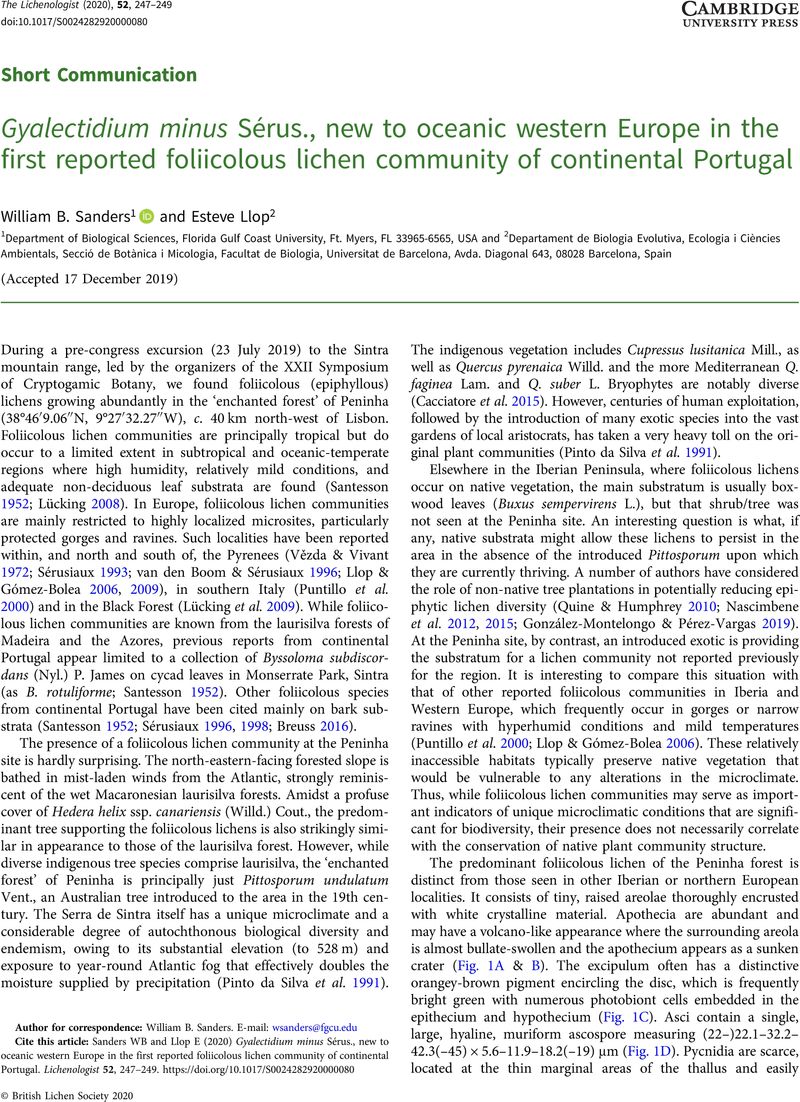Crossref Citations
This article has been cited by the following publications. This list is generated based on data provided by Crossref.
Martínez Colín, Paola
Lücking, Robert
and
Herrera‐Campos, María de los Ángeles
2021.
Diversity begets diversity: Phorophyte and microsite relations of foliicolous lichens in the lowland rain forest at Los Tuxtlas Biosphere Reserve (Veracruz, Mexico).
Ecological Research,
Vol. 36,
Issue. 2,
p.
313.



